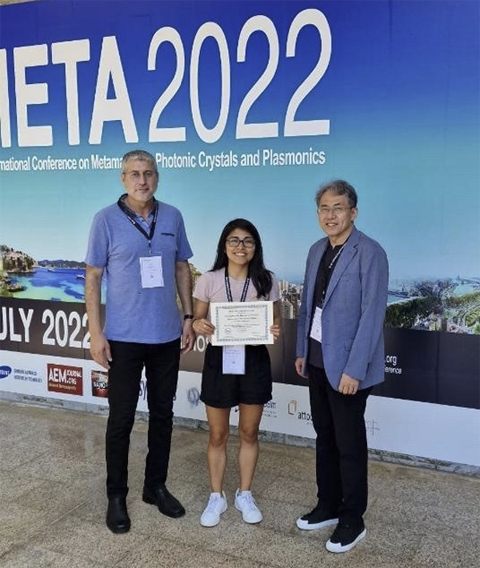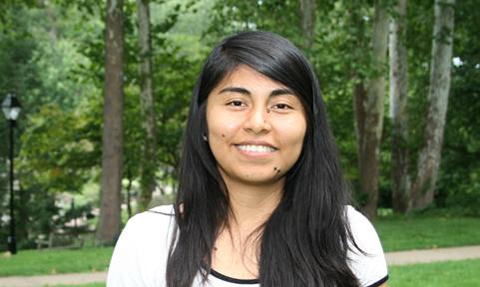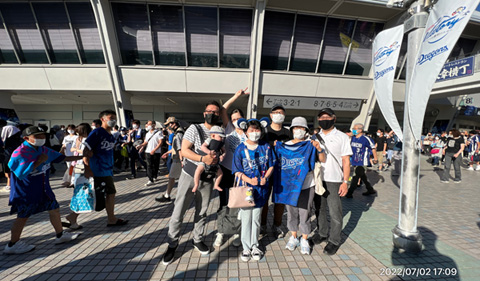Physics doctoral student Eva Yazmin Santiago Santos received a prestigious Best Speaker Award at a large international conference in Spain for her talk describing hot-electron generation of nanoparticles.
“I had presented a poster and given a virtual talk at other international conferences before. However, this was my first in-person oral presentation at an international conference. This was also my first invited talk, so it made it even more special,” Santiago Santos said.
More than 600 physicists attended META 2022, the 12th International Conference on Metamaterials, Photonic Crystals and Plasmonics held July 19 – 22 in Torremolinos, Spain. META is the world’s leading conference on nanophotonics and metamaterials, reporting on various current hot topics such as metasurfaces and metadevices, topological effects in photonics, two-dimensional quantum materials, light-matter interaction, plasmonic nanodevices, heat engineering, and quantum-information systems.

Eva Yazmin Santiago Santos at the award ceremony in Torremolinos with Professor Said Zouhdi (META 2022 General Chair) and Dr. Duheon Song (Samsung Advanced Institute of Technology).
Santiago Santos said the highlight of the conference “was meeting people that work in a similar field as ours in different parts of the world. In particular, I really enjoyed interacting with some of the people we have collaborated with in previous projects but had never met in person before.”
Her faculty mentor is Alexander Govorov, Distinguished Professor of Physics & Astronomy in the College of Arts and Sciences. The additional colleagues she’s collaborating with on her work include Lucas V. Besteiro from the Universidade de Vigo in Spain, Xiang-Tian Kong from Nankai University in China, Miguel A. Correa-Duarte from the Universidade de Vigo in Spain, and Prof. Zhiming Wang from the University of Electronic Science and Technology of China.
Santiago Santos’s research is in computational physics of nanostructures for optical, energy, and sensor applications, and the title of her talk was “Generation of hot electrons in plasmonic nanoparticles with complex shapes.”
“The generation of hot electrons in plasmonic nanoparticles is an intrinsic response to light, which strongly depends on the nanoparticle shape, material, and excitation wavelength,” she said. “In this study, we present a formalism that describes the hot-electron generation for gold nanospheres, nanorods and nanostars. Among them, the nanostars are the most efficient, with an internal energy efficiency of approximately 25 percent, owing to multiple factors, including the presence of hot spots,” Santiago Santos said.




















Comments